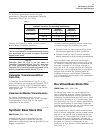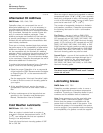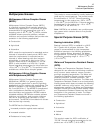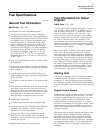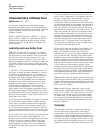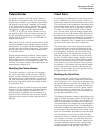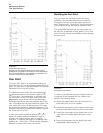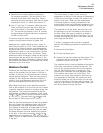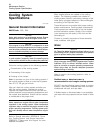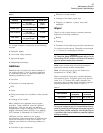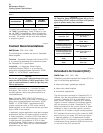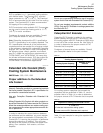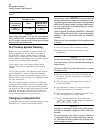Special offers from our partners!

Find Replacement BBQ Parts for 20,308 Models. Repair your BBQ today.

21
Maintenance Section
Fuel Specifications
Cetane Number
The cetane number of the fuel has an effect on
the ability of the engine to start. Also, the cetane
number has an effect on the interval of time before
the engine runs smoothly. Generally, an increase
of ten in the cetane number will allow the engine
to be started at a lower temperature. The starting
temperature can be improved approximately
7to8
C (12 to 15
F) for every increase of ten in
the cetane number. After the engine reaches the
normal operating temperature, a change in the
cetane from 40 to 50 will have a minimal effect on
engine performance.
Most fuels that have a cetane number above 40 will
permit acceptable engine starts in warmer outside
temperatures. The engine will start satisfactorily with
this fuel when the engine is kept warm. The engine
can be kept warm by using either a heated room
or a coolant heater.
During average starting conditions, direct injection
engines require a minimum cetane number of 40. A
higher cetane value may be required for operation
in high altitudes or for cold weather operation. The
minimum fuel cetane number that is required for the
precombustion engine is 35.
Modifying the Cetane Number
The cetane number of a fuel can be changed if
the fuel is mixed with a fuel that has a different
cetane number. Generally, the cetane number of
the mixture will be in direct relation to the ratio of
the fuels that were mixed. Your fuel supplier can
provide the information about the cetane number
of a particular fuel.
Additives can also be used to improve the cetane
number of a fuel. Additives are evaluated through
testing in special engines. However, the fuel
characteristics of additives are not identical to a
natural product. While both fuels may be rated as
having the same cetane number, starting may be
different.
Cloud Point
It is important to understand that the cloud point of
a fuel is different from the pour point. There is no
relationship between cloud point and the pour point.
The cloud point is the temperature that allows some
of the heavier components in the wax to solidify in
the fuel. This wax is not a contaminant in the fuel.
The wax is an important element of No. 2 diesel
fuel. The wax has a high fuel energy content and
the wax has a very high cetane value. Removal of
the heavier wax lowers the cloud point of the fuel.
Removal of the wax also increases the cost because
less fuel can be made from the same amount of
crude oil. Basically, a No. 1 diesel fuel is formulated
by removing the wax from a No. 2 diesel fuel.
The cloud point of the fuel is important because
the cloud point can limit the performance of the
fuel filter. The wax can alter the fuel characteristics
in cold weather. Solid wax can fill the fuel filters.
The solidified wax will stop the flow of fuel. Fuel
filters are necessary in order to remove dirt from
the fuel. The filters block foreign material, and the
filters protect the parts for the fuel injection system.
Since fuel must flow through the filters, installing
a fuel heater is the most practical way to prevent
the problem. A fuel heater will keep the fuel above
the cloud point as the fuel flows through the fuel
system. The fuel heater will permit the wax to flow
through the filters with the fuel.
Modifying the Cloud Point
You can lower the cloud point of a diesel fuel by
mixing the diesel fuel with a different fuel that has a
lower cloud point. No. 1 diesel fuel or kerosene may
be used to lower the cloud point of a diesel fuel. The
efficiency of this method is not good, because the
ratio of the mixture does not have a direct relation
to the improvement in cloud point. The amount of
fuel with low cloud point that is required makes the
process less preferable to use.
The following illustration contains a table that can be
used to find the necessary mixture for two fuels with
different cloud points. In order to use the table, you
must know the exact fuel cloud point of each fuel.
This specification can change from one purchase of
fuel to the next purchase of fuel. This specification
is normally available from personnel at the source of
the fuel supply. When fuels that have a lower cloud
point are not available, this method cannot be used.
The manufacturer of the fuel can add cold flow
improvers to the fuel. Cold flow improvers modify the
wax crystals in the fuels. The cold flow improvers
do not change the fuel’s cloud point. However, the
cold flow improvers keep the wax crystals small
enough to pass through standard fuel filters. For
mixing precautions, see the topic “Pour Point”.



